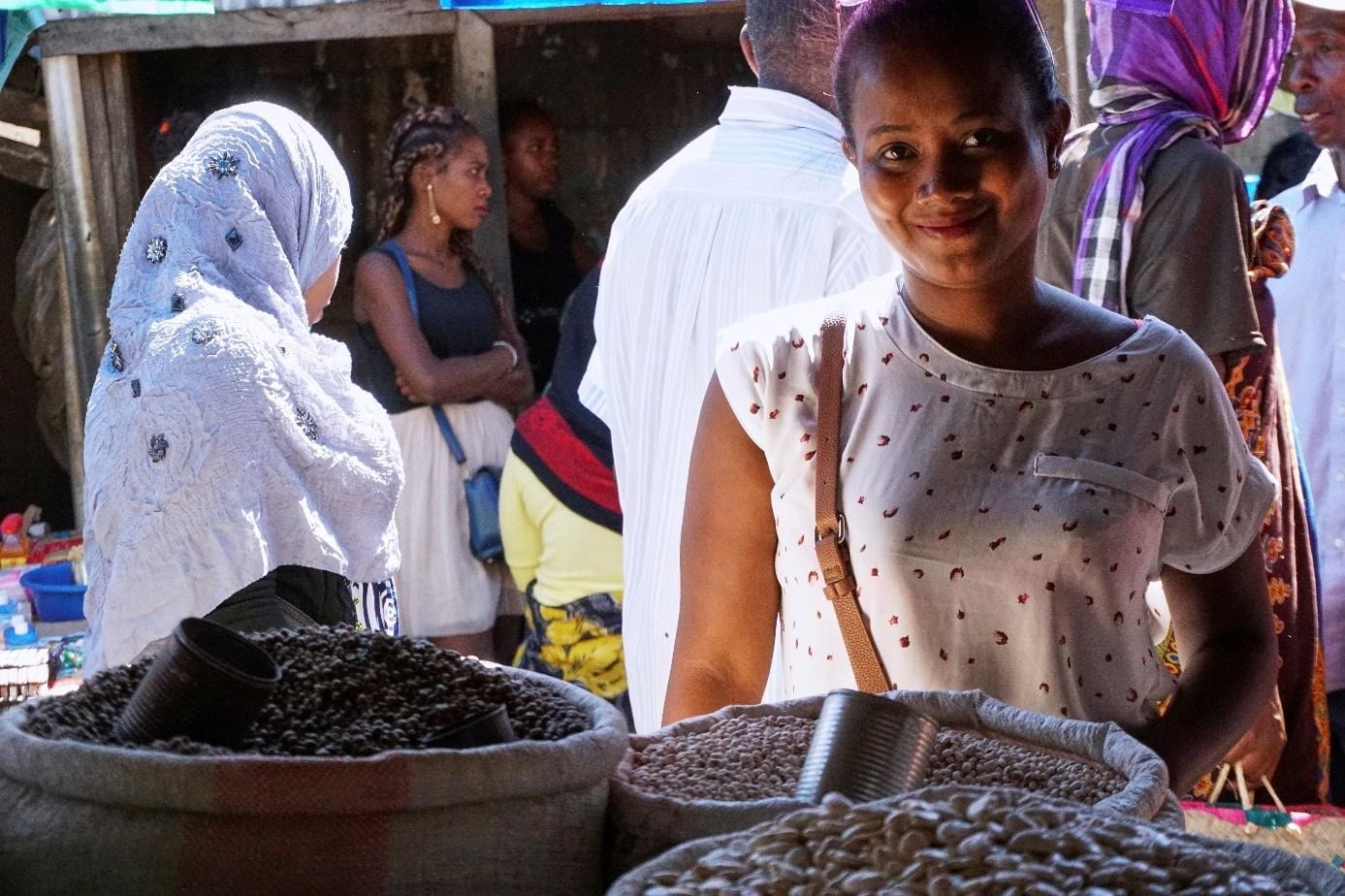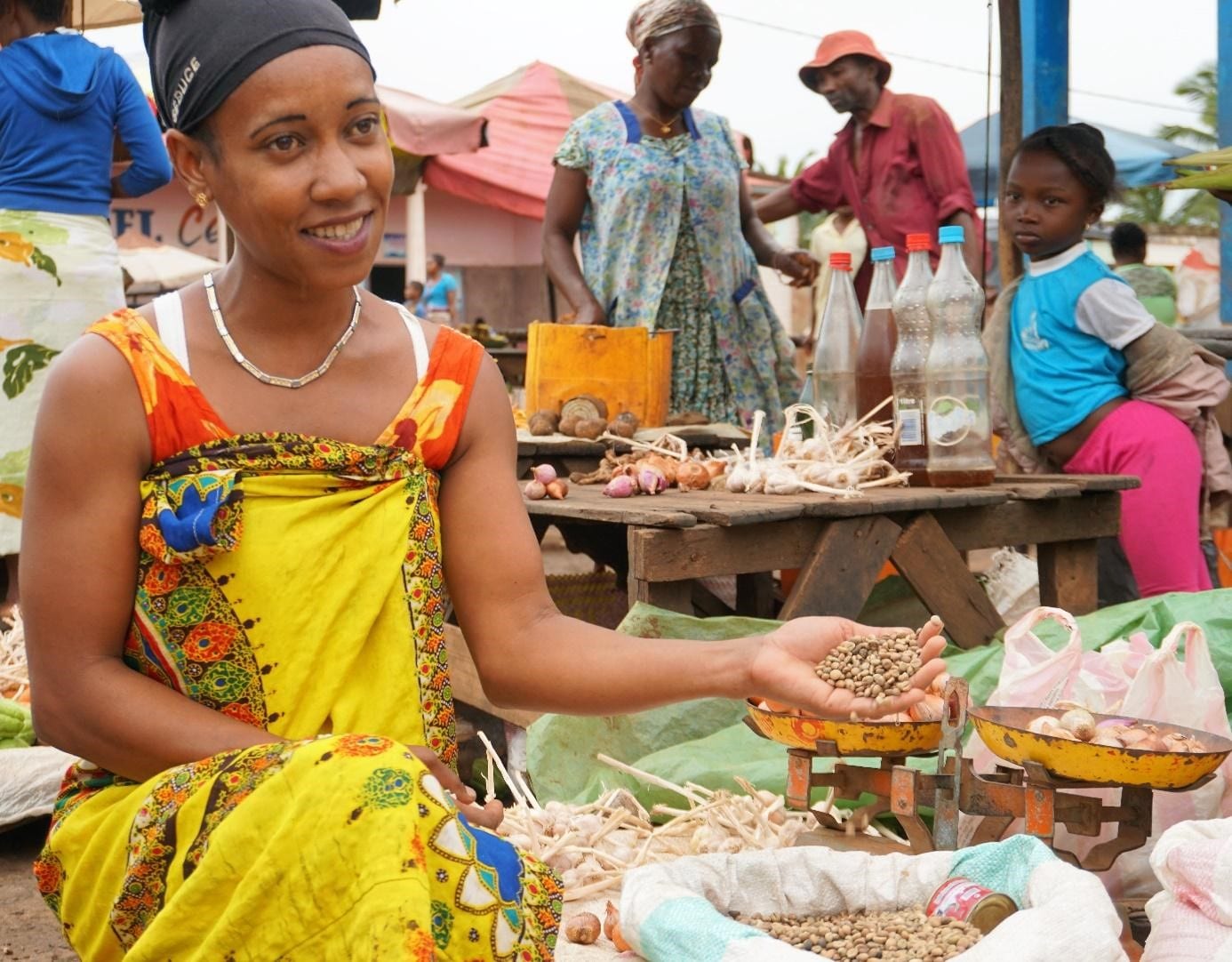Malagasy street coffee culture how about Malagasy coffee

In Madagascar, coffee has become a national obsession and an important part of daily life. At its core are street vendors who devote their lives to the whole process from beans to cups.
But being a street vendor here not only means drinking coffee, but also providing important social services for every cup of coffee. Let's explore Madagascar's fascinating coffee culture.
Coffee is a way of life.
Coffee is guaranteed in every bustling city and small village market in Madagascar. Suppliers build in shade, awning, umbrella or kiosk. Everyone here is a coffee drinker, and there is no shortage of sellers to meet the demand.
Madagascar is a land with incredible landscape and ecological diversity. On this island off the coast of southeast Africa, 80% of the country's natural species are unique to the country. This includes wild coffee, which is sometimes consumed locally on a small scale, but most of the coffee consumed here is grown Arabica or robusta coffee.
According to the supplier, some people prefer TAF, a local instant coffee sold in sachet. But most people like to add freshly roasted coffee to strong boiling hot, and then pour in a lot of condensed milk.
Madagascar has a long history with coffee. More than 2000 years ago, immigrants from Indonesia and Borneo settled in the country. The French came here in the late 1800s, and coffee was grown during this period.
The colonists carried out agricultural reforms to turn coffee production into an industry. They planted the seeds of discontent next to the coffee tree, which turned into revolution, independence and the unrest and poverty that still exists in Madagascar today.
But for locals, coffee has nothing to do with politics. 24.8 million Malagasy people have a strong love affair with beer. For the old, poor and rich, coffee is an essential part of life.
Harry Rakoto Slama, who has been mentoring tourists, scientists and writers across Madagascar since 2000, said: "when I visited a friend's house, I handed over a cup of coffee without hesitation. "Coffee supports social cohesion and relationships even in the family. Malagasy culture is deeply ingrained. " He explained.
He said: "Andao hisotro kafe means & # 39; let's go for coffee & # 39 * this is how most people in Madagascar start their day."
The unstable history of Malagasy coffee
Madagascar's economy depends on the cultivation of vanilla, coffee, cloves and rice, but agriculture here is mainly subsistence agriculture. The growth of small farmers is enough to enable their families to have access to the surplus agricultural products sold in the local market.
But this is not always the case. Coffee has been one of Madagascar's main exports since it entered the country independently in 1960 until the 1980s. The industry is full of hope and potential. In fact, during this period, Madagascar was the eighth largest coffee producer in the world.
But by 2001, export output had fallen to only 12%. Since Madagascar's independence, Madagascar has experienced four major constitutional periods, and political instability has had a significant impact on the country's economy. Since 2015, the average output of raw coffee has been only 46000 tons.
But while Malagasy coffee may have fallen internationally, the local market is safer. In fact, at home, coffee has far more than one kind of support for the country.

Innovative industry
Green coffee is sold on the market in Madagascar and is taken out of sacks in 390 grams of condensed milk cans. The cost of this universal measure is about 3000 Arairy (US $1).
Condensed milk is very important here, so the cans are abundant and the whole system is based on spoons. If you don't have enough money, you can choose to use a half-quantity service of 170 grams of ketchup jars.
Brewing coffee is sold on almost every street. Automatic coffee trafficking is a means of survival and a reliable way to generate much-needed income, especially for women. In sub-Saharan Africa, supplier activities account for 51 per cent of all informal female workers outside agriculture.
Street vendors dominate the informal coffee market. Few people in Madagascar can afford cafes, and street vendors are not hampered by a lack of basic services such as running water, electricity or housing. There are simple stalls on almost every street, while resourceful suppliers provide basic services.
1/4 rural households in Madagascar lack food and do not have access to wood and charcoal for cooking. Hot coffee and rice cakes fill the empty stomach and save customers the cost of cooking food at home. Coffee cheers the country.
The life of street coffee merchants
Nelena Nirina Moratsara has been selling street coffee for 15 years. Every morning, she gets up before dawn to carry a woven straw basket with the equipment needed to make coffee. Pots, buckets, charcoal stoves, colored tin cups, sugar, condensed milk and, of course, coffee.
To do this, she added batter of Mickey (rice cakes), fofo baolina (fried doughnuts) and batter (doughnuts). Then she hurried to her usual street corner in Antsiranana. Her temporary layout contrasts sharply with the bright colors of restored French colonial architecture.
Nirina decorated the rickety wooden table with bright blue and yellow tablecloths and benches beside them. As the sun rose, the coffee on the charcoal stove was boiling, and the rice cakes and cups were ready for the first batch of customers.
Early regulars sat on the bench, waiting for Nirina to fill the cup with hot black coffee at a price of 400 Arials (12 cents). They passed a can of sweetened condensed milk and the price increased by 100 Ariari, but everyone used it without exception.
Some customers are adept at pouring coffee from one cup to another or into a saucer to cool. As soon as the rice cake came out of the oven, it was immediately immersed in a hot cup and swallowed.
Nirina's six-year-old daughter washes coffee cups in a bucket near her mother.
"she is very smart and should go to school, but I can't afford to send her," Nelena sighed.
It is not uncommon for only two of her six children to go to school. More than 40 per cent of Madagascar's population is under the age of 14, but the country has the largest number of uneducated children.
Political unrest has led to public budget cuts, loss of household incomes and rising prices of basic food. This combination makes it difficult for poor families to receive education, and many communities do not have schools.
As a coffee maker, Nirina must invest in raw materials, fuel and labor costs, as well as the start-up cost of equipment. She struggles to earn less than $2.50 a day from the global poverty line and says she cannot afford school supplies of 120000 Ariari ($40) a year for each child.
"my husband makes money from rickshaws, and I earn 20,000 Ariari a day by selling coffee. On Sunday, I moved outside the church. I can make more money from people who go to church. "

Wholesaler
By 10:00, the morning coffee sale was over, and Nirina packed her bags. She walked 2 kilometers to the market to buy the next day's supplies, including raw coffee beans.
The Rehotiry family has been selling coffee in the busy Antsiranana market for more than 20 years. Hasina Rehotiry secretly sold it to street vendors and others from his 50-kilogram bag of coffee beans. The family also has larger orders with other coffee merchants in the area.
Hasina buys raw coffee beans at Ambilobe 140km away once a week. He takes a taxi, which can be a pick-up truck, a minibus or anything in an old car. People sat inside with parcels piled on the roof. He paid an extra 5000 lire for each bag of coffee to the taxi driver.
Setting up stalls in the highly competitive coffee market is a challenge. "Coffee is not enough. We also have to sell beans and beans to make enough money to send our five children to school. " Hasina told me.
The hard work of every cup of coffee
Selling coffee every morning is only part of Nirina's workload. After buying green beans from Hasina, she needs to prepare them.
"I make coffee at four o'clock in the afternoon before the sun goes down. It's cool at this time of day. It took me an hour to prepare the coffee, "she said."
Nirina lives in a two-bedroom metal house with her family. This style is becoming more and more popular because of the cheap materials that are easily available in China.
On the firewood outside the house, she poured 490 grams of mung beans into a cauldron and stirred constantly. The second crack will take about 15 minutes. Malagasy people like dark coffee. She cools the baked beans and grinds the coffee with a mortar and pestle.
The hard work of every cup of coffee
Selling coffee every morning is only part of Nirina's workload. After buying green beans from Hasina, she needs to prepare them.
"I make coffee at four o'clock in the afternoon before the sun goes down. It's cool at this time of day. It took me an hour to prepare the coffee, "she said."
Nirina lives in a two-bedroom metal house with her family. This style is becoming more and more popular because of the cheap materials that are easily available in China.
On the firewood outside the house, she poured 490 grams of mung beans into a cauldron and stirred constantly. The second crack will take about 15 minutes. Malagasy people like dark coffee. She cools the baked beans and grinds the coffee with a mortar and pestle.
The process was physically demanding-no child was strong enough to cope with heavy sticks-but 25 minutes later, she was happy to drink finely ground coffee.
"my business depends on the best flavor in the coffee," Nirina explained. "otherwise, my client will go somewhere else."
After grinding, it's time to make coffee.
Nirina pours four tablespoons of freshly ground coffee into the filter cloth. She poured boiling water on the ground in a circular motion. She waited patiently for the coffee to be brewed and dripped into the bucket, and then poured the filtered coffee into an aluminum pan to boil. Her yard was filled with a delicious smell.
So far, it takes almost an hour to prepare the coffee, and then Nirina and her child sit together and enjoy the coffee.
"there is no residue in the bottom of my cup," she said proudly. " She told me that she had learned the details of how to make coffee and how to do business from her mother.
Nirina poured the coffee into a plastic container, shipped it to the market the next day, and the sun went down. It's been another long day. She rubbed her leg and stood for hours before it hurt, and confessed to me that she was worried about her health.
"my legs swell every day. The doctor gave me these medicines, but they didn't change. There's something wrong. I don't know what this is. I have to keep working for my children. I want this child to go to school. "
Important Notice :
前街咖啡 FrontStreet Coffee has moved to new addredd:
FrontStreet Coffee Address: 315,Donghua East Road,GuangZhou
Tel:020 38364473
- Prev

What's the difference between Ethiopian and Kenyan coffee? what is the main flavor of African coffee?
Coffee beans from African countries are my favorite. When I first tried African coffee beans, what triggered me was that coffee didn't taste like coffee at all. Africa, and more specifically East Africa, produces some of the world's most unique coffee, characterized by bright floral aromas, fruit and wine tones, and rich acidity. All in all, African coffee beans are full of flavor! I encourage
- Next

Coca Coffee Paradise Manor, Colombia, how is the double anaerobic washing Castique?
Colombia Paradise Manor double anaerobic washing Castillo Coffee producing area: Cauca Manor: paradise Manor elevation: 2050 meters treatment: double anaerobic washing varieties: Castiyou Coffee producing area Colombia is currently the third largest coffee producer in the world, after Brazil and Vietnam, commercial beans were first grown in the 1830s and coffee accounted for the largest export crop in the 20th century.
Related
- Detailed explanation of Jadeite planting Land in Panamanian Jadeite Manor introduction to the grading system of Jadeite competitive bidding, Red bid, Green bid and Rose Summer
- Story of Coffee planting in Brenka region of Costa Rica Stonehenge Manor anaerobic heavy honey treatment of flavor mouth
- What's on the barrel of Blue Mountain Coffee beans?
- Can American coffee also pull flowers? How to use hot American style to pull out a good-looking pattern?
- Can you make a cold extract with coffee beans? What is the right proportion for cold-extracted coffee formula?
- Indonesian PWN Gold Mandrine Coffee Origin Features Flavor How to Chong? Mandolin coffee is American.
- A brief introduction to the flavor characteristics of Brazilian yellow bourbon coffee beans
- What is the effect of different water quality on the flavor of cold-extracted coffee? What kind of water is best for brewing coffee?
- Why do you think of Rose Summer whenever you mention Panamanian coffee?
- Introduction to the characteristics of authentic blue mountain coffee bean producing areas? What is the CIB Coffee Authority in Jamaica?

